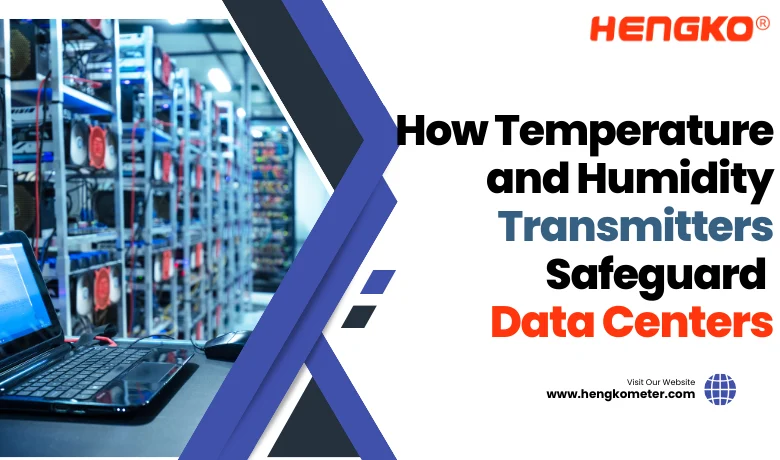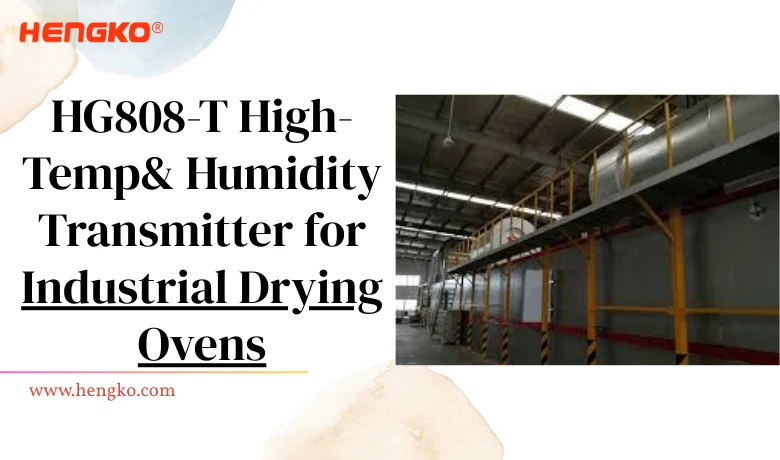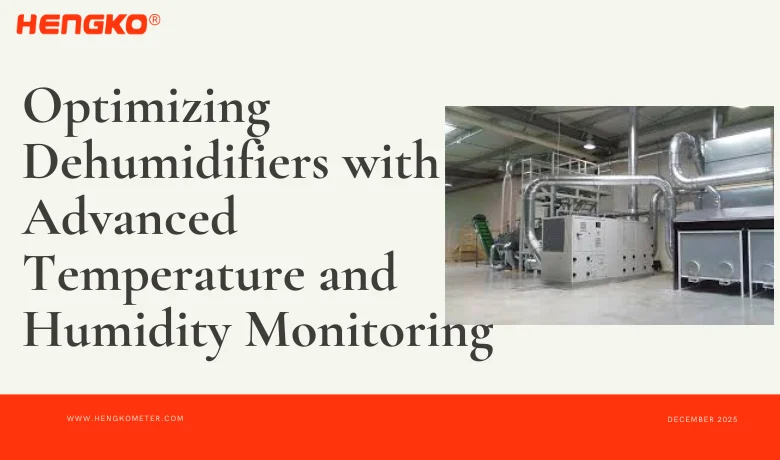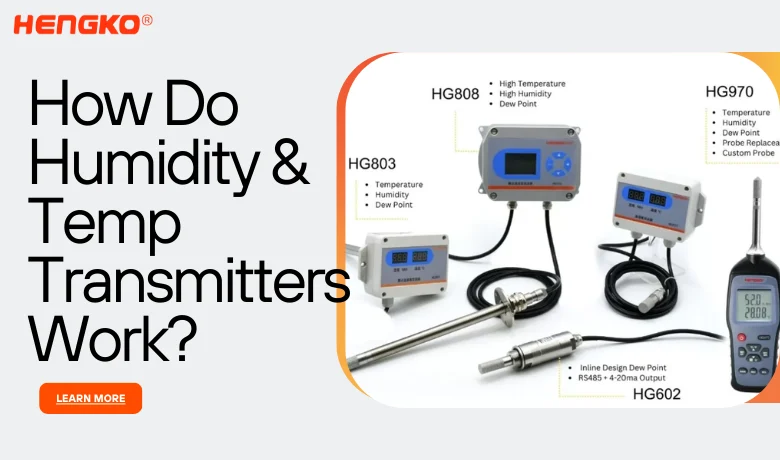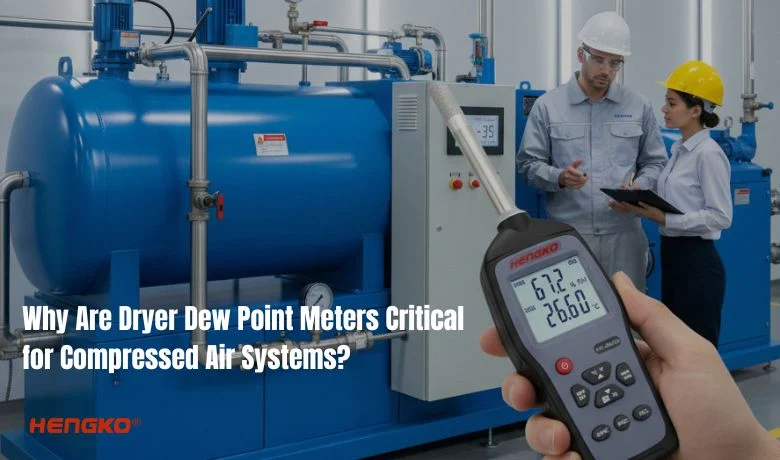Introduction
Data centers are the backbone of the digital world, hosting everything from cloud storage to essential IT infrastructure. The efficiency and reliability of these centers depend not only on the technology inside but also on the environment in which it operates.
One of the most crucial yet often overlooked aspects of data center operations is maintaining the right temperature and humidity levels. This is where temperature and humidity transmitters come into play, ensuring your equipment runs smoothly without environmental interference.
What is the data center?
A data center is a facility used to store and manage vast amounts of data. It houses servers, storage systems, and networking equipment that run critical applications and services. These centers are designed to ensure continuous operation with advanced cooling systems, power backups, and strict security measures.
Data centers support everything from cloud computing to business applications, making them essential for the smooth functioning of the digital world. Proper temperature and humidity control are crucial in these environments to protect sensitive equipment and ensure long-term reliability.
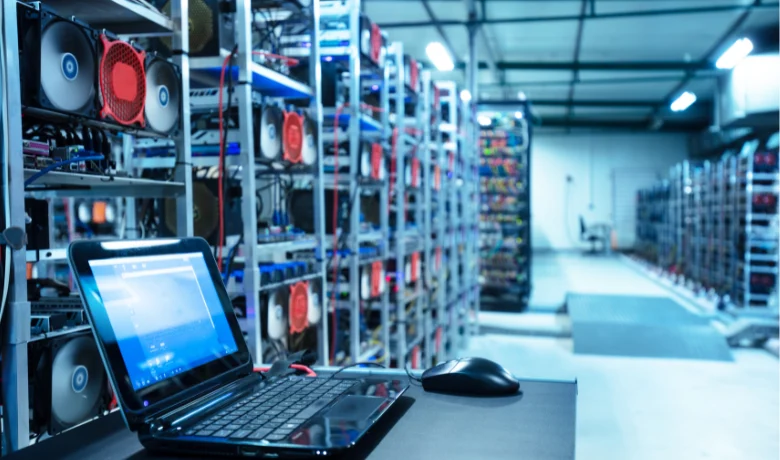
Why Temperature and Humidity Matter in Data Centers?
Maintaining the right temperature and humidity levels is essential for the proper functioning, longevity, and reliability of this equipment. Here’s why temperature and humidity matter in data centers:
1. Prevent Overheating of Equipment
Servers and IT equipment generate a significant amount of heat during operation. If the temperature within the data center rises too high, it can lead to overheating, causing systems to throttle performance, shut down unexpectedly, or even suffer permanent damage. Maintaining a controlled temperature ensures that these components function efficiently and without interruptions.
2. Protect Against Equipment Failure
High Humidity can lead to condensation, which might cause short circuits, corrosion, and general deterioration of electrical components. On the other hand, low humidity increases the risk of static electricity, which can damage sensitive equipment. Proper humidity control helps prevent both types of damage, ensuring your servers and devices remain in optimal condition.
3. Maximize Equipment Lifespan
Consistently maintaining ideal temperature and humidity conditions not only reduces the likelihood of immediate failures but also extends the lifespan of equipment. Extreme environmental conditions can cause wear and tear over time, reducing the longevity of servers and other IT components. By controlling the environment, data centers can delay the need for costly replacements and repairs.
4. Improve Energy Efficiency
When temperature and humidity are well-regulated, cooling systems work more efficiently. If the temperature is too high or humidity is poorly controlled, air conditioning and cooling systems have to work harder to maintain a safe environment. Proper environmental control helps optimize energy use, leading to lower operating costs and a reduced carbon footprint.
5. Prevent Downtime
Unpredictable temperature and humidity fluctuations can cause system failures or even complete outages. A slight increase in temperature or a sudden drop in humidity can trigger alarms or automatic shutdowns. By maintaining consistent environmental conditions, data centers reduce the risk of downtime and ensure continuous service availability.
6. Regulatory Compliance
Many industries and organizations are subject to regulatory standards concerning the environmental conditions within data centers. Compliance with these standards is crucial to avoid fines or legal issues. Temperature and humidity transmitters help ensure that the data center remains within these regulated parameters, making compliance easier to manage.
The Role of Temperature and Humidity Transmitters in Data Centers
To maintain optimal environmental conditions, data centers rely on temperature and humidity transmitters for real-time monitoring and control. These transmitters play a crucial role in ensuring stable and efficient operations:
1. Real-Time Monitoring and Data Feedback
Temperature and humidity transmitters continuously track environmental changes and transmit real-time data to the central management system. This allows operators to quickly detect and respond to anomalies, preventing environmental factors from affecting equipment performance.
2. Preventive Maintenance and Risk Management
By analyzing long-term monitoring data, data center teams can identify trends and potential risks. For example, if humidity levels remain high in a specific area, it may indicate ventilation issues or HVAC system inefficiencies, prompting timely adjustments.
3. Integration with Smart Control Systems
Modern data centers often employ intelligent environmental control systems. Data from temperature and humidity transmitters can be integrated with HVAC systems and cooling equipment, enabling automated adjustments. For instance, if the temperature exceeds a set threshold, the cooling system can activate automatically, optimizing energy efficiency.
4. Precise Zone Management
Data centers consist of multiple server racks, each with different heat dissipation requirements. Installing multiple temperature and humidity transmitters allows for localized environmental control, ensuring that all equipment operates within optimal conditions.
How to Optimize Temperature and Humidity Management in Data Centers?
While temperature and humidity transmitters provide essential monitoring capabilities, implementing the right strategies and technologies can further enhance environmental control.
1. Strategic Placement
Optimal Installation Height: Sensors should be placed at server rack intake and exhaust points to monitor airflow and temperature variations effectively.
Coverage of Critical Areas: Key zones such as high-density server areas, cooling units, and battery backup rooms should be monitored to ensure comprehensive data collection.
2. Implementation of Hot and Cold Aisle Containment
By separating hot and cold airflow, containment strategies optimize cooling efficiency and reduce the workload on air conditioning systems, leading to better temperature and humidity control.
3. Adoption of Energy-Efficient Cooling Technologies
Liquid Cooling: More efficient than traditional air-cooling, liquid cooling removes heat directly from servers, reducing reliance on air conditioning.
Free Cooling: Utilizing naturally cool outdoor air can lower energy consumption significantly.
Choosing the Right Temperature and Humidity Transmitter
With numerous monitoring devices available, selecting the right temperature and humidity transmitter for a data center requires consideration of several key factors:
1. Accuracy and Response Time
Higher accuracy ensures more reliable data, typically requiring a temperature accuracy of ±0.3°C and humidity accuracy of ±2% RH.
Fast response times allow for immediate environmental adjustments.
2. Durability for Data Center Environments
Transmitters must be resistant to electromagnetic interference from high-density electronic equipment.
Dustproof and moisture-resistant features are essential for long-term reliability.
3. Wired vs. Wireless Transmitters
Wired Transmitters: Offer stable data transmission but require more extensive installation efforts, making them suitable for large-scale data centers.
Wireless Transmitters: Provide flexible deployment and easy scalability but require consideration of signal coverage and battery lifespan.
Conclusion
Temperature and humidity transmitters are crucial tools for ensuring the safe, efficient, and compliant operation of data centers. These devices allow for real-time monitoring, environmental adjustments, and proactive protection against damage, leading to increased operational efficiency and the extension of equipment lifespans. For data centers looking to safeguard their infrastructure and enhance performance, investing in high-quality temperature and humidity transmitters is an essential step toward success.
Are you looking to enhance the efficiency and reliability of your data center? Contact us today at sales@hengkometer.com to learn more about our temperature and humidity transmitters and find tailored solutions for your facility.

